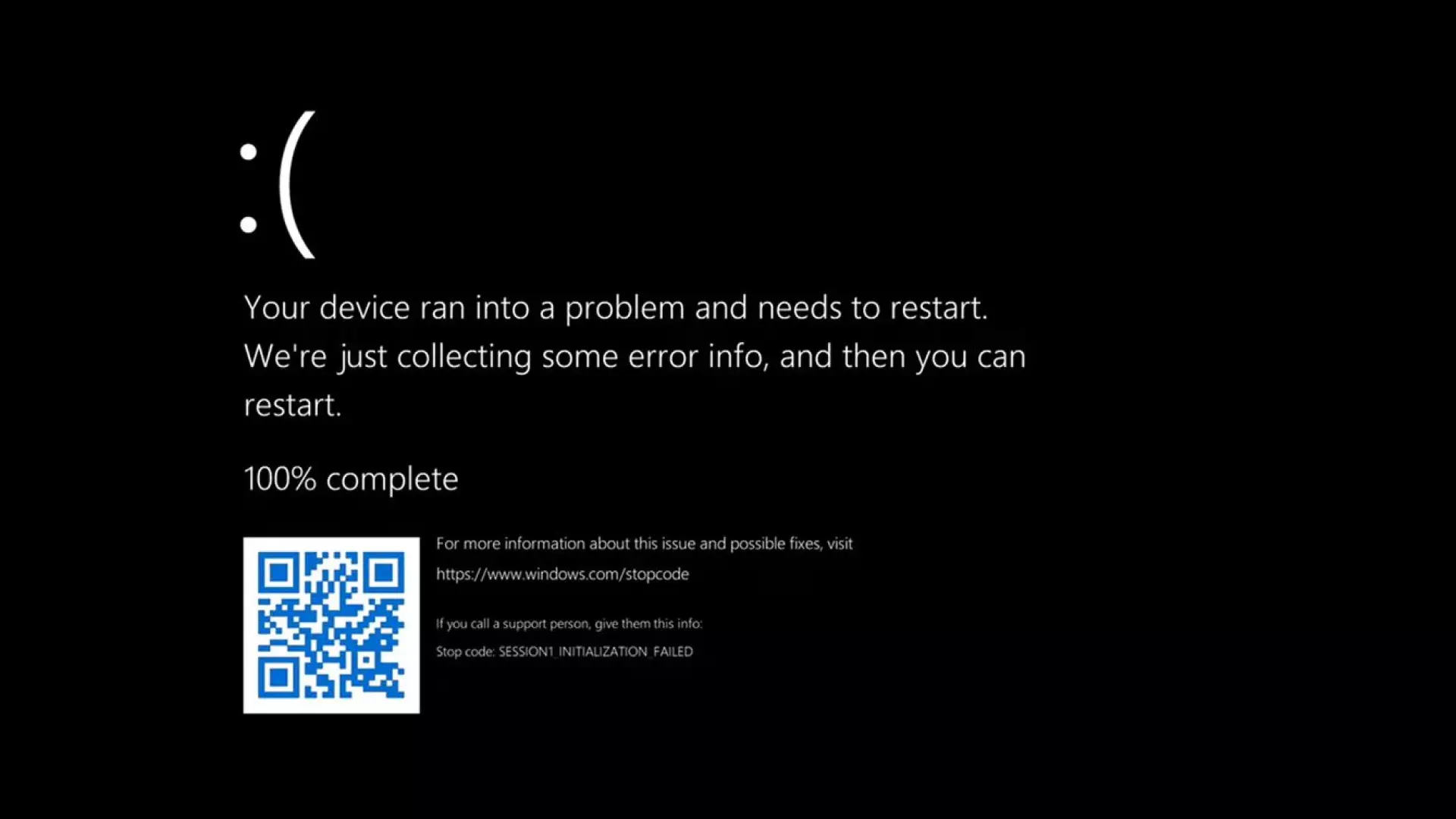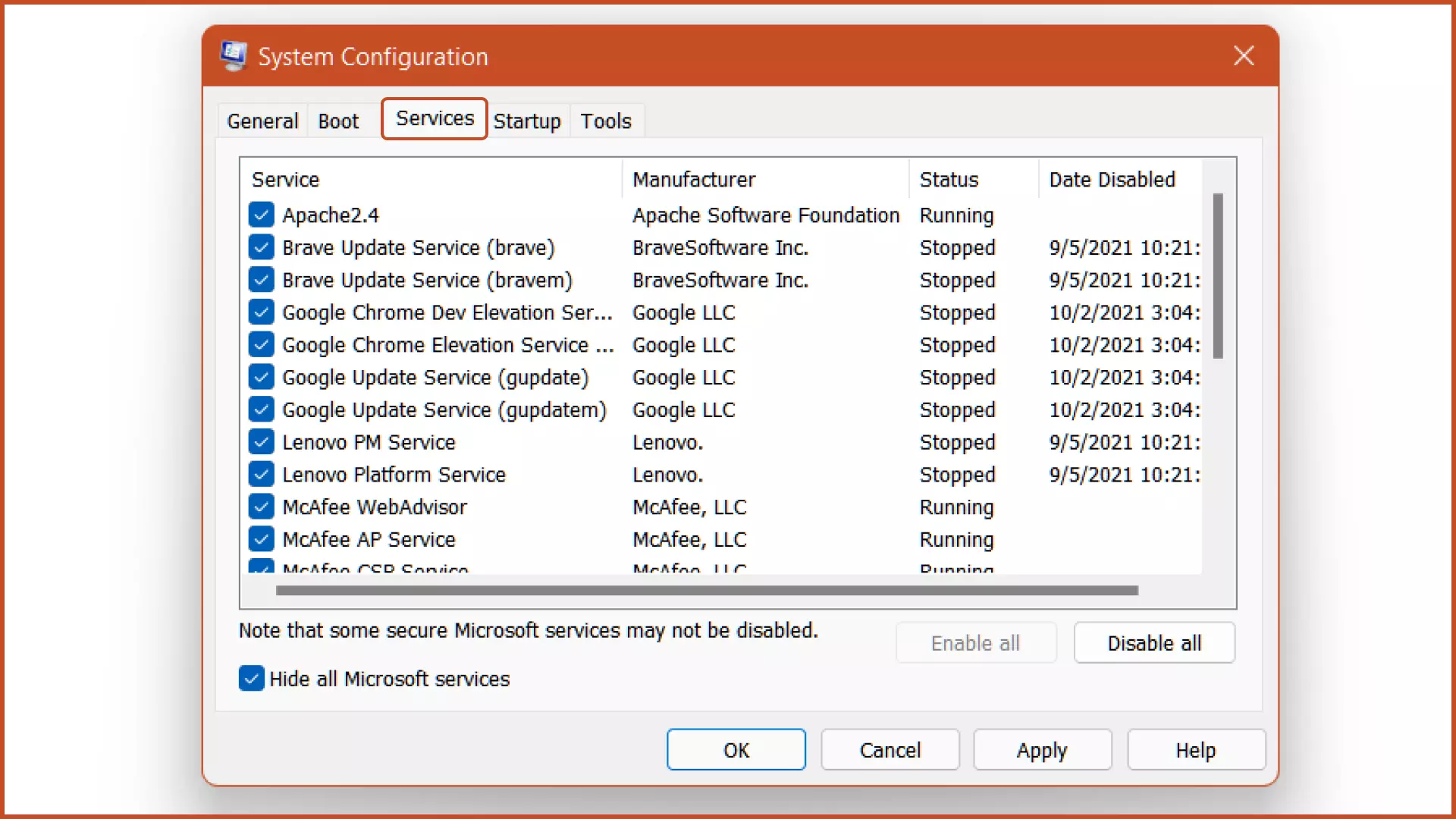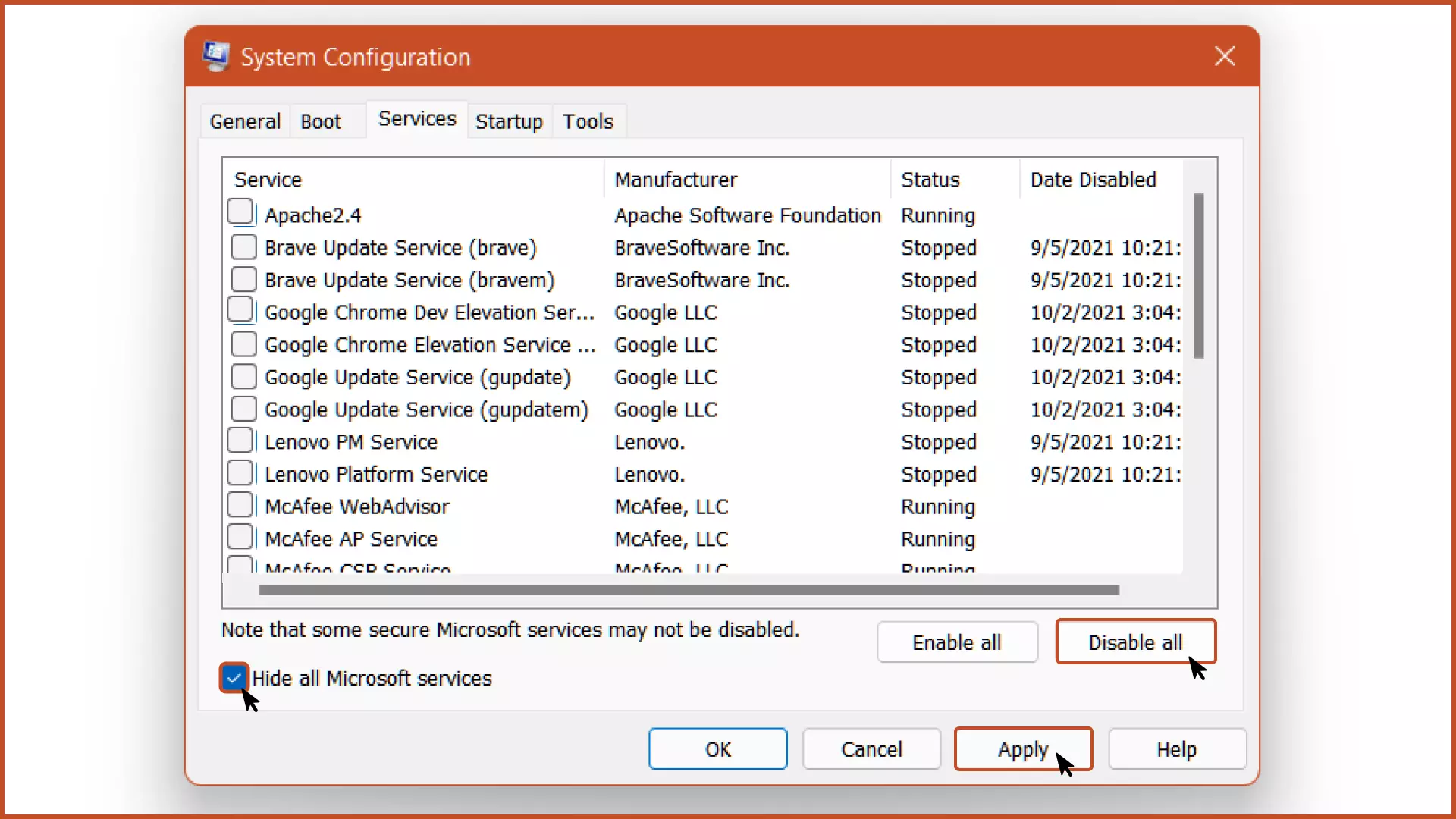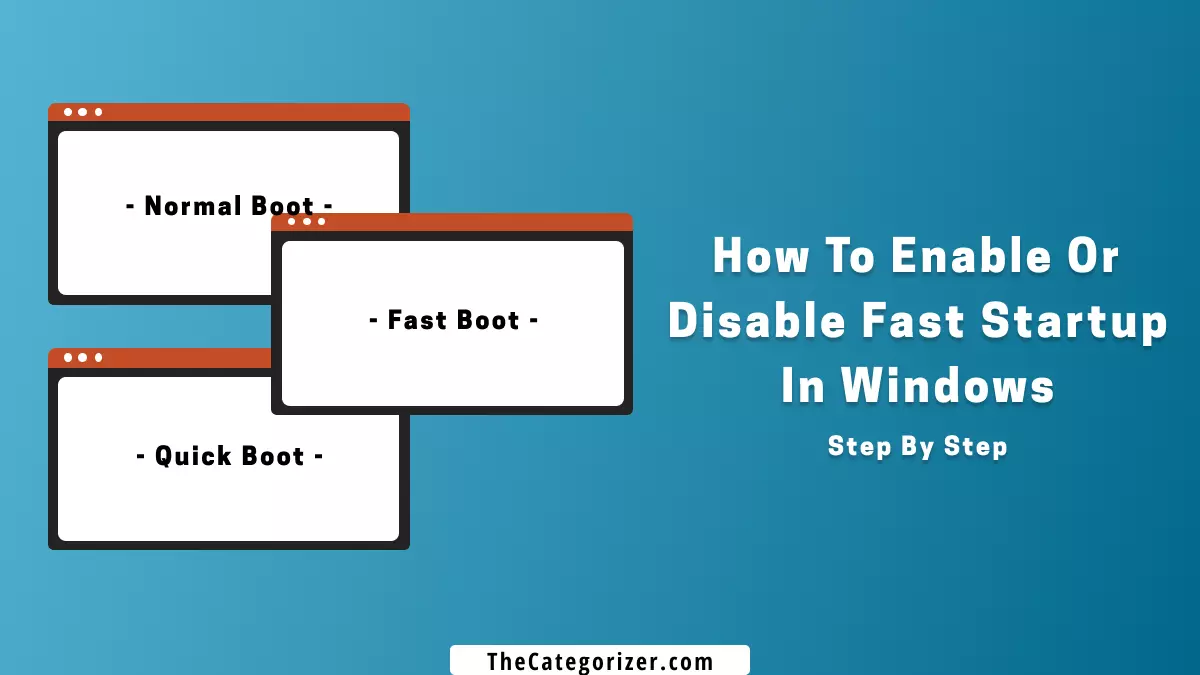Overview – Clean Boot in Windows 11
It appears that you’re facing some system errors including BSOD (Black Screen of Death, formerly called Blue Screen of Death until Windows 10) and software conflicts in Windows and want to troubleshoot the software compatibility issues.
The Clean boot is the process of starting the computer and booting Windows with the most basic and essential OS components including the services, programs, and drivers.

Let’s break down what we’re going to cover in this guide:
How Does Clean Boot Work?
The Clean Boot involves stopping the programs and their services in the background completely. It is mainly done for troubleshooting purposes when the user is facing usability issues commonly due to incompatible software installations.
We’ll be basically stopping all the background startup applications and services in Windows so your device starts with a minimum number of device drivers, third-party programs, and their respective services to troubleshoot advanced Windows errors and issues. Once we identify and fix the software compatibility issues, we’ll be re-enabling the previous settings.
How To Clean Boot Windows 11
Step 1: Search and open “System Configuration” from the Start menu or type “msconfig” (without quotation marks) in the Windows Run.

Step 2: Go to the “Services” tab from the top bar and uncheck the “Hide all Microsoft services” option.
Microsoft uses its own services such as Hyper V, Credentials, Network, etc, for performing core functions in Windows. In this step, we’re basically hiding the built-in Windows programs to avoid disabling them accidentally and causing system failure.

Step 3: Now, you’ll be seeing the services from third-party applications only. Click the “Disable all” button to disable all the services by third-party programs in Windows and press the “Apply” button.

Step 4: Press the “Ctrl + Shift + Esc” key combination to open the task manager.

Step 5: Go to the “Startup” tab from the top bar and you’ll find the applications that run during the Windows Startup.

Step 6: Single-click the enabled startup program and press the “disable” button.

Step 7: Restart your device and the computer loads the operating system in a clean environment

This method is pretty lengthy but it’ll ensure that no third-party application will be loaded during the next startup and the clean boot is being performed properly.
What to do after a Clean Boot
After performing a clean boot in Windows, we have to restore the previous Windows configuration and startup settings. To do so, follow the steps below:
Step 1: Search and open “System Configuration” from the Start menu or type “msconfig” (without quotation marks) in the Windows Run.

Step 2: In the “General” tab, choose the “Normal Startup” option to load all device drivers and services on the next boot onwards and press the apply button.

Step 3: Restart your device to make changes take effect properly.

Note: After restarting the device, check to see if the startup settings and Windows services are back to default. If this is the case, then congrats on a successful clean boot; if not, you’ll have to manually reset to the previous settings from the task manager and System configurations.
Reasons why you should perform a Clean Boot
1. Reduce RAM Usage
Some unused programs keep running in the background and use their respective workers and services for their functioning, thus increasing the RAM usage. But, once we perform a clean boot and do not re-enable the disabled services, these services will be kept stopped, thus reducing the memory consumption.
2. Fix Software Conflicts
The software conflict is basically a scenario when two programs are unable to run at the same instance in Windows mainly due to code conflicts which generally occur when the programs clash for the same resources such as memory, and other external peripherals.
3. Increase Battery Usage
The unused services running in the background consume the device’s battery to perform their respective functions. Also, the battery usage varies by application; some apps require a lot of resources even while they are running in the background. A clean boot without re-enabling the unused programs at startup and background will save your device power usage without compromising performance.
4. Fix BSOD (Black Screen of Death)
The Black Screen of Death (formerly known as the Blue Screen of Death until Windows 10, BSOD) is the Windows Error mainly occurring due to software and hardware conflicts. If there would be a software conflict causing the BSOD, then there are high chances that it’ll be fixed after a clean boot.
5. Increase Device’s Performance
Since the programs are halted during the Windows startup and no application is running in the background after performing a clean boot, the RAM is available to be used for other necessary functions, thus it’ll increase the device’s performance.
FAQs Related to Windows Clean Boot
Does a clean boot erase everything?
No, the clean boot doesn’t erase anything from the system and all your personal files, folders, apps, documents, etc will remain intact. The Clean Boot ensures that no external third-party application is loaded and conflicting during the system boot.
Is clean boot safe?
Yes, it is totally safe to perform a clean boot on your version of Windows. The clean boot usually doesn’t cause any problem if done correctly. All the programs will keep working properly. After performing the clean boot, you need to make sure that you reset the settings to the previous state.
What is the difference between the safe mode and clean boot?
It is recommended to perform a clean boot when you’re facing issues regarding the software compatibility and boot the device in safe mode when facing issues related to hardware.
Next Steps
Overall, we can consider that you can perform a clean boot by disabling Windows startup programs from the task manager and services from the System Configuration.
It’s crucial to note that the services you disable during the clean boot won’t work again until you manually enable them, so, it’s critical to evaluate and choose which services to re-activate. This means that if you wish to utilize applications that use deactivated services, you must first re-enable the services so you can use the program.
Further, configure the Windows Settings by referring to the related articles listed below.
Related Articles
Disable Background Apps in Windows
Stop Background Apps from running in the background and reduce internet usage, RAM usage, and increase the battery life.
Clear Cache in Windows 11
Completely clear cache in Windows, reducing the disk space usage and freeing up some storage.
Disable Visual Effects in Windows
Feeling the device lagging and hanging consecutively? Disable visual effects and notice the difference in performance.
Delete Old Windows Folder
Delete the unused Windows old folder on your device and free up 15-25 GB of storage.






